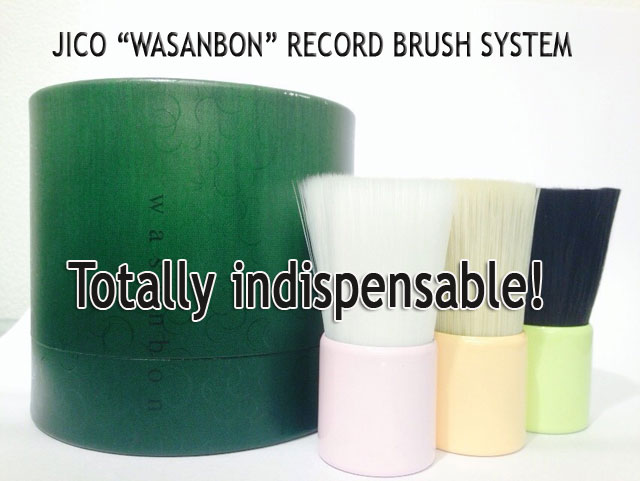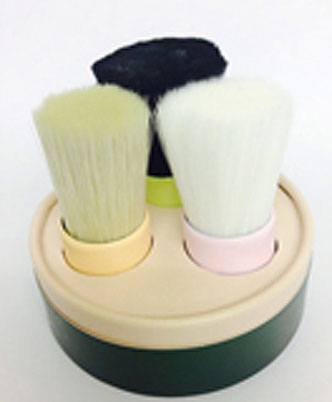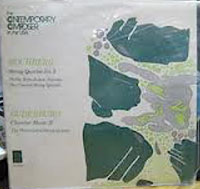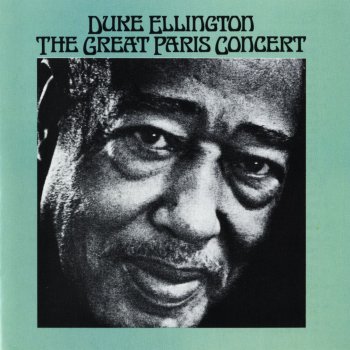JICO RECORD BRUSH SYSTEM

Over the last year or so, I have seen much ink spilled over the phenomenon of the so-called “vinyl revival.” Even the venerable British publication, Gramophone, that bastion of classical music journalism since 1923, ran a feature article in its May 2016 issue entitled “The Vinyl Revolution” with a cover blurb asking the urgent, million-dollar question, “What lies behind the renewed appeal of vinyl?” Written by a self-confessed vinyl virgin (or digital veteran, however you want to look at it), it was more of a personal piece that even touched on his impression of listening to a record for the first time – which happened to be Sony’s 2014 pressing of Mozart’s Le nozze di Figaro conducted by Teodor Currentzis – as one of revealing “an embracing quality and a certain spatial clarity.” As an aside, one of the interesting things Currentzis makes his orchestra do is stand up in the studio while recording the music, so there is a real palpable air of energy and enthusiasm when you listen to the album. Get it if you can!
 Anyway, the Gramophone writer went on to conclude that it was ultimately the ritual of playing the music that appears to be behind vinyl’s comeback. Now, whether you agree that this is the ultimate reason for LPs sounding better than digital (I for one do not), it is perhaps undeniable that ritual does play a crucial part in record listening. Whether you want to or not, we have to get off our asses and flip to side B once we finish side A, or take it off and put another record on. We should clean our records every time we play it. For the more anal-retentive ones amongst us, like myself, we should first zap our records with a demagnetizing device (such as Furutech’s LP Demag) followed by an anti-static gun or blower. Those of us who are lucky enough to own an IPC LP Energizer (which I reviewed here) will also need to blast the record grooves prior to playing. Then, just before we lower the tonearm, there is usually one last gadget we all use, from novices to veterans. The brush.
Anyway, the Gramophone writer went on to conclude that it was ultimately the ritual of playing the music that appears to be behind vinyl’s comeback. Now, whether you agree that this is the ultimate reason for LPs sounding better than digital (I for one do not), it is perhaps undeniable that ritual does play a crucial part in record listening. Whether you want to or not, we have to get off our asses and flip to side B once we finish side A, or take it off and put another record on. We should clean our records every time we play it. For the more anal-retentive ones amongst us, like myself, we should first zap our records with a demagnetizing device (such as Furutech’s LP Demag) followed by an anti-static gun or blower. Those of us who are lucky enough to own an IPC LP Energizer (which I reviewed here) will also need to blast the record grooves prior to playing. Then, just before we lower the tonearm, there is usually one last gadget we all use, from novices to veterans. The brush.
There was a time when the humble brush was all a record-lover thought was necessary to keep his prized music collection clean for all time. We now know that this is rubbish. Just brushing an LP once or twice around prior to playing it, then sleeving it until the next play, is inadequate to say the least. Not to mention that there are plenty of LP brushes out there, each claiming to do the job and be the last brush you will ever need. So what’s a music lover to do? Does he just grab the next available one he finds, or search out for the most expensive one on the market? Are they really as different as their makers would want you to believe?
Kimono needles, anyone?
Enter JICO, a Japanese company known for its extremely high quality Super Analogue stylus (SAS) replacements for a variety of classic cartridges, such as the Shure V15 and various older Audio Technicas. JICO is short for the Nippon Precision Jewel Industry Company Ltd, which started business way back in the 1860s manufacturing kimono sewing needles in a sea-side town called Hamasaka, about 200 kilometres from the nearest major cities such as Osaka. They then diversified their product line to include steel and diamond-tipped needles for record players in the 50s and 60s, and due to geographical restrictions, had to install their own manufacturing and fabrication facilities, eg custom jigs. This enabled them to control the quality of their end product by ensuring the precision of manufacturing along the entire process. Their SAS reproduction styli as well as their own line of proprietary cartridges are now well-known across the world and much sought after by the cognoscenti.
For a company steeped in history and producing tools for works of textile art, it is not surprising that they would soon decide to branch out into other areas of vinyl accessories, and one of the things they decided to come up with is perhaps the most complex record brush in the market today.
Well, when I say “brush”, I actually mean a “brush system” made up of three separate brushes. Yes, you heard right. You don’t just use one brush, no no no. We are vinyl fanatics, okay? So JICO’s product is called the Wasanbon, which is written in Kanji as “和三盆”and literally means “a pot of three.” Bon in this case is the exact same word as you will find in the more familiar “bonsai”, meaning a pot or vessel. When the Wasanbon first arrived at my premises, I was struck by how much care went into the packaging. As with most things Japanese, the presentation of the product is just as important as how well it performs. Wrapped in a muslin-like white bag, the container that holds the brushes looks like a small section of thick green bamboo. When you open the container, you will find three differently coloured and numbered brushes nestled within, literally a pot of three. Even the instructions are printed on a luminous, fibrous stock which you will not feel like junking straightaway. Just the way the colours on the brushes blend together in their container makes Wasanbon a visual pleasure. Even if you never use it (God forbid!), simply placing it next to your prized turntable announces you as a serious LP guy or gal, don’t mess with me thank you very much. Of course, when something looks this delectable, you are compelled to reach out and actually make use of it. It becomes a true pleasure, not just a chore you need to get on with.
 Brush #1 is a straight brush made of white polybutylene terephthalate bristles with a light pink base of aluminium. This serves the purpose of removing the larger dust and debris particles from the record, so it should always be used first. Brush #2 is made of brown split-tipped bristles (polyethelene terephthalate) meant to dislodge the tinier particles deeper inside the record grooves. Finally, Brush #3, the black bristled one made of acrylic fibre, removes static from the cleaned record to prevent dust from clinging to it. For those more health-conscious amongst us, don’t worry about all the “phthalates” that you see: as long as you do not ingest the brushes, which you are definitely not meant to, Wasanbon is perfectly harmless to your physical heath, and will do wonders for your mental well-being, more of which later.
Brush #1 is a straight brush made of white polybutylene terephthalate bristles with a light pink base of aluminium. This serves the purpose of removing the larger dust and debris particles from the record, so it should always be used first. Brush #2 is made of brown split-tipped bristles (polyethelene terephthalate) meant to dislodge the tinier particles deeper inside the record grooves. Finally, Brush #3, the black bristled one made of acrylic fibre, removes static from the cleaned record to prevent dust from clinging to it. For those more health-conscious amongst us, don’t worry about all the “phthalates” that you see: as long as you do not ingest the brushes, which you are definitely not meant to, Wasanbon is perfectly harmless to your physical heath, and will do wonders for your mental well-being, more of which later.
As you’d expect of a quality Japanese product, the brushes are all a sensual, tactile pleasure to use. Brush #1 is softer than Brush #2, and Brush #3 is the softest of them all. Although the instructions are to brush in concentric circles, this seems to me like just pushing dust around the record surface. So I adopted the technique of holding the brush still over a fixed point in the spinning record starting from the dead wax, and working my way perpendicularly down to the edge. My super torque-y Lenco allows me to do this easily, but you may have problems with a sensitive belt-driven platter that grinds to a halt just by looking at it the wrong way.
I always follow-up the use of Wasanbon by two 20-second blasts of the Furutech Anti-Stat followed by the IPC LP Energizer.
Sound Quality
Again, as with some of my other reviews of tweakery and gadgetry that I submit for publication on this esteemed website, talking about the “sound” of a brush seems to border on the mentally unstable. But if we do not use sound as a benchmark for gauging the effectiveness of this product, then how else can we do it? So, at the risk of sounding like someone who should be committed forthwith, let me at least try to explain how it changed my system’s sound.
 Upon the very first application of Wasanbon on my recording of Chamber Music II by Robert Suderburg (Turnabout TVS 34524) played by the Philadelphia String Quartet, my initial impression was of an overwhelmingly more “grounded” sound. There were noticeably fewer gratuitous ticks and pops, meaning those that are neither from physical scratches on the vinyl or from deeply embedded dirt courtesy of a thousand plays by a one-tonne Seeburg stylus tracking at 100g. The anti-static brush #3 appears to have removed even more static, resulting in a cleaner, almost digital like background to the sound. This was despite the loving ministrations of the Furutech Anti-Stat as mentioned above. Cleaner sound, darker backgrounds meant that the stylus is able to dig even more detail out from the grooves. Because of this greater detail, the tone of string instruments stand out in greater relief, coming across with increased realism.
Upon the very first application of Wasanbon on my recording of Chamber Music II by Robert Suderburg (Turnabout TVS 34524) played by the Philadelphia String Quartet, my initial impression was of an overwhelmingly more “grounded” sound. There were noticeably fewer gratuitous ticks and pops, meaning those that are neither from physical scratches on the vinyl or from deeply embedded dirt courtesy of a thousand plays by a one-tonne Seeburg stylus tracking at 100g. The anti-static brush #3 appears to have removed even more static, resulting in a cleaner, almost digital like background to the sound. This was despite the loving ministrations of the Furutech Anti-Stat as mentioned above. Cleaner sound, darker backgrounds meant that the stylus is able to dig even more detail out from the grooves. Because of this greater detail, the tone of string instruments stand out in greater relief, coming across with increased realism.
Eagle-eyed readers will note that I have deliberately skirted my mention of “groundedness,” not due to journalistic tardiness, but because I want to talk about it separately. A question to ponder: what makes a system sound grounded? Is it more or better bass? Slam, punch or grunt, whichever term takes your fancy? Perhaps it’s a bit of all the above; but to my way of thinking, I find it easier to describe “groundedness” by negative definition, i.e., what it isn’t. If the music seems to float all over the soundscape, having no particular foundation, and the listener feels that the music does not appear to be made by real human beings, then the system lacks groundedness. I would hazard a guess that the Wasanbon probably increased the groundedness of my system by at least 40%, not a shabby feat considering that my Nantais Reference Lenco idler-drive system is not exactly weak in this area. I must say that this was probably something I least expected from any tweak, let alone a humble record brush – but then again, Wasanbon is no ordinary record brush.
 This groundedness that I heard from the very first record was reproduced with each successive LP I put on the platter. Whether it was the classical, jazz (mono Ben Webster on Verve or the Duke’s 1963 Paris concerts at the Olympia Theatre) or pop (too numerous to mention) music, I heard the same grounded quality present itself, albeit in differing amounts. But I am the kind of person who cannot sleep until I figure out why this happens. The closest answer I can think of is that the absence of dust and debris on the record, which will always settle anew no matter how religiously you clean your LPs, allows the stylus to track the actual grooves much more accurately rather than having to work at all the unrelated tasks such as pushing the dirt away, or jumping over jammed particles. And because the stylus is genuinely tracking the grooves, you hear rock steady images in the soundscape, both in terms of positioning and dynamics, as well as of lower distortion.
This groundedness that I heard from the very first record was reproduced with each successive LP I put on the platter. Whether it was the classical, jazz (mono Ben Webster on Verve or the Duke’s 1963 Paris concerts at the Olympia Theatre) or pop (too numerous to mention) music, I heard the same grounded quality present itself, albeit in differing amounts. But I am the kind of person who cannot sleep until I figure out why this happens. The closest answer I can think of is that the absence of dust and debris on the record, which will always settle anew no matter how religiously you clean your LPs, allows the stylus to track the actual grooves much more accurately rather than having to work at all the unrelated tasks such as pushing the dirt away, or jumping over jammed particles. And because the stylus is genuinely tracking the grooves, you hear rock steady images in the soundscape, both in terms of positioning and dynamics, as well as of lower distortion.
Another LP that is worth mentioning is the 2-eye pressing of Juilliard Quartet playing Bartok’s String Quartet No.4 (Columbia D3S-717 MS6703 boxed set) which allowed me a glimpse of another facet of this grounded quality. In the second movement, the music took on a gentle, Zen-like calmness as the quartet took their time to let the music’s many layers unfold like a flower. There was no hurry, no sense of having to get anywhere fast. I was drawn into the moment in a way no other digital reproduction system has ever been able to do. Yet, the music retained its edge and attack when called for, such as in the last movement as the strings lurched forward aggressively right from the opening notes. I have heard this LP at least 50 times since I bought it some years ago, but I had never understood how magnificently the Juilliard players had interpreted Bartok’s seminal quartets, or how accurately the Columbia engineers managed to capture that singular performance. Until now.
Conclusion
I do not mean the foregoing to sound like Wasanbon can be used on its own and is the answer to all your dirty record woes. It should be applied as part of a bigger system of LP hygiene, but a step that to me now is totally indispensable. After you use it, every other brush – to borrow Von Karajan’s famous catchphrase – is gaslight. It truly contributes to a sense of ritual when playing vinyl, one in which the listener enters into a present, more meditative state to receive and imbibe the music, rather than holding his finger over the Forward button like a trigger-happy hunter on the last day of duck season, skipping over digital tracks every 3 seconds. Perhaps that Gramophone writer was right after all. What came first? The chicken, or the egg? I neither know nor care, except that if ritual helps me to enjoy my music more, then heck, count me in. USD100 may seem like a lot of money for a brush, but once you have used it, there is no going back.
Stephen Yan
Specifications:
Price: $100.00
BOX: D90mm×H85mm
Brush: D22mm×H65mm
Gross weight: 400g
Material: Straight Brush (Pink): PBT(polybutyleneterephtalate)
Spread-Tipped Brush (Orange): PET(polyethylene terephthalate)
Anti-Static Brush (Light Green): Acrylic fiber
Handle: aluminium
Made in Japan
Website: www.jico-stylus.com/wasanbon.php
Stereo Times Masthead
Publisher/Founder
Clement Perry
Editor
Dave Thomas
Senior Editors
Frank Alles, Mike Girardi, Russell Lichter, Terry London, Moreno Mitchell, Paul Szabady, Bill Wells, Mike Wright, and Stephen Yan,
Current Contributors
David Abramson, Tim Barrall, Dave Allison, Ron Cook, Lewis Dardick, John Hoffman, Dan Secula, Don Shaulis, Greg Simmons, Eric Teh, Greg Voth, Richard Willie, Ed Van Winkle, Rob Dockery, Richard Doron, and Daveed Turek
Site Management Clement Perry
Ad Designer: Martin Perry






Be the first to comment on: JICO RECORD BRUSH SYSTEM